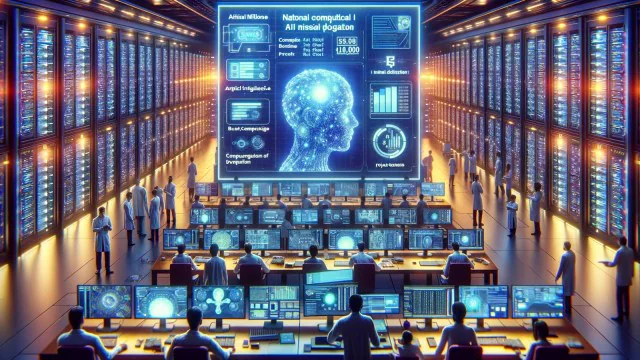The Union Cabinet on Thursday is expected to approve the artificial intelligence (AI) Mission under which the government will allocate funds towards subsidizing private companies looking to set up AI compute capacity in the country and also allocate seed funding for AI start-ups, The Indian Express has learnt.
Total allocation towards the AI Mission could be around Rs 10,300 crore, it is learnt. Last year, Prime Minister Narendra Modi had announced the Mission and said its aim was to establish the computing powers of AI within the country. This, he had said, will provide better services to startups and entrepreneurs and also promote AI applications in the sectors of agriculture, healthcare and education.
Under the AI Mission, the government will focus on four key areas covering AI research, funding start-ups working on designing bespoke chips for AI use cases, offering viability gap funding (VGF) for private companies looking to set up data centres in India for AI use cases, and also creating computing capacity within the government.
The Indian Express was first to report that the government was looking at a public-private model for setting up computing capacity in India alongside increasing the capacity in PSUs like the Centre for Development of Advanced Computing (C-DAC).
For private companies looking to set up computing capacity domestically, the model the government could follow is by offering viability gap funding. “Basically, there will be a tender inviting companies to set up data centres. When a company applies for, let’s say a centre which may cost Rs 10,000 crore, they can seek a viability gap funding from the government for a certain amount of that,” a senior government official said requesting anonymity since the Cabinet is yet to clear the project.
This paper had earlier reported that in total, India is looking to build a compute capacity of anywhere between 10,000 GPUs (graphic processing units) and 30,000 GPUs under the PPP model, and an additional 1,000-2,000 GPUs through the C-DAC.
Computing capacity, or compute, is among the most important elements of building a large AI system apart from algorithmic innovation and datasets. It is also one of the most difficult elements to procure for smaller businesses looking to train and build such AI systems. For context, according to a 2020 blog by Microsoft, the company had developed a supercomputer for OpenAI – the firm behind ChatGPT – which consisted of 10,000 GPUs among other things.
The move will come days after the Cabinet cleared chip projects worth Rs 1.26 lakh crore including what could be the country’s first commercial fabrication plant. India has identified electronics manufacturing as a key economic driver and the government is willing to spend money in the initial phase to get production rolling.
This is a strategy that the European Union is following as well. To dissuade concerns that Europe is overregulating artificial intelligence (AI), which could stifle innovation in the bloc, earlier this year, the European Commission had released a set of rules to enable start-ups and other businesses to access hardware – such as supercomputers and computing capacity – for them to build large- scale AI models.
Under India’s AI Mission, the government could also merge the National Supercomputing Mission with the AI Mission to create in-house computing capacity within the C-DAC. Rudra is an indigenous server platform built by the C-DAC which has two expansion slots for graphic cards. Param Utkarsh is a high performance computing system setup at C-DAC which offers AI over machine learning and deep learning frameworks, compute and storage as a cloud service.
A portion of the funds will go towards setting up an AI innovation centre where stakeholders including the academia, industry and government can work on building AI applications, it is learnt.
Like us on Facebook or follow us on Twitter & Pinterest and Instagram and Keep visiting us for Latest News Online.
CREDIT: – INDIAN EXPRESS


